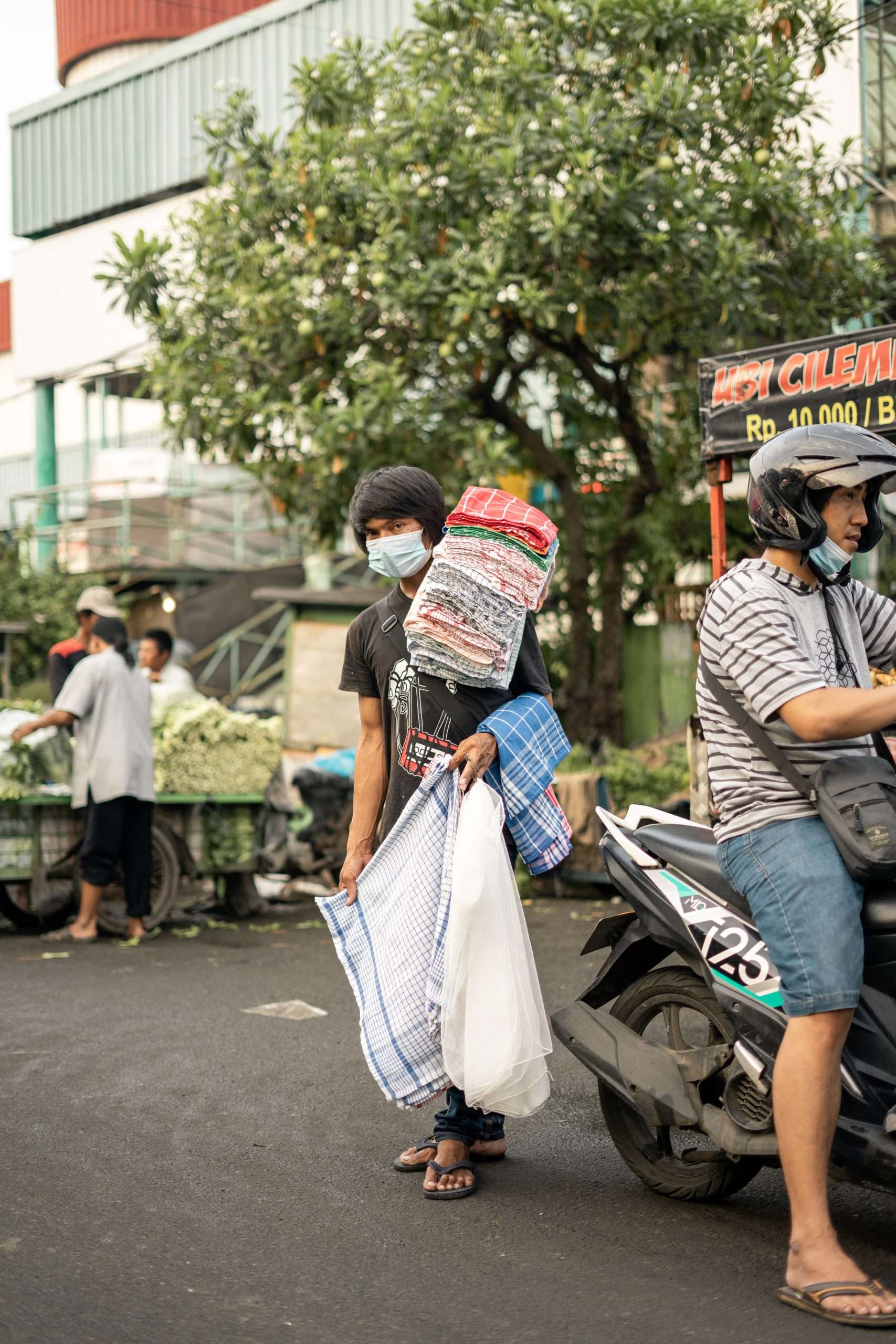Introduction

How In The 21st Century Can Poverty Cycle Be Eradicated In Developing Countries? Poverty is a pervasive and complex issue that has plagued developing countries for decades. Despite numerous efforts to eradicate it, the poverty cycle persists, leaving millions of people trapped in a vicious cycle of deprivation and suffering. With the dawn of the 21st century comes new hopes and opportunities to tackle this problem head-on.
In this article, we explore some innovative solutions that can help break the poverty cycle in developing nations once and for all. From empowering communities to embracing modern technology, let’s delve into how we can create lasting change for those living in poverty in the 21st century.
The current state of poverty in developing countries
Poverty is defined as the state of being poor, having little money or being in need of basic necessities such as food and shelter. According to the World Bank, over one billion people worldwide live in poverty, with most of them concentrated in developing countries.
There are many factors that contribute to the high levels of poverty in developing countries. One of the main reasons is unequal distribution of wealth and resources. In many developing countries, a small elite class controls a large majority of the country’s wealth, while the majority of the population lives in poverty. This gap between rich and poor has been increasing in recent years, exacerbating poverty levels.
another significant factor that contributes to poverty in developing countries is corruption. In many cases, government officials and those in positions of power misuse their positions for personal gain instead of working for the betterment of their citizens. This results in a depletion of resources that could be used to alleviate poverty and improve living conditions for citizens.
Lastly, natural disasters can also trigger or exacerbate poverty levels in developing countries. For example, a major earthquake or drought can destroy crops and lead to widespread food shortages, leaving people without access to adequate nutrition. This can lead to long-term effects such as malnutrition and increased susceptibility to disease.
While there are many complex factors that contribute to poverty in developing countries, there are also ways to address this issue. One way is through economic development initiatives that aim to create jobs and grow businesses within these countries. Another
The causes of poverty in developing countries
One of the main causes of poverty in developing countries is a lack of access to education. This means that children are not able to attend school and get the skills they need to find good jobs as adults. Additionally, many families cannot afford to send their children to school, or keep them enrolled once they start.
Another cause of poverty in developing countries is a lack of access to healthcare. This means that people are more likely to get sick and die from preventable diseases. Additionally, it can be difficult for people to get the medical care they need when they are sick or injured.
Finally, another cause of poverty in developing countries is a lack of access to clean water and sanitation facilities. This means that people often have to drink dirty water, which can make them sick. Additionally, it can be difficult for people to wash their hands and stay clean when there is no running water or soap available.

The effects of poverty in developing countries
Poverty Cycle; In the 21st century, poverty is still a big issue in many developing countries. The effects of poverty can be seen in many aspects of life, from education and health to employment and economic opportunities.
One of the most pressing issues facing developing countries is the high level of inequality. Income inequality has been on the rise in recent years, and this trend is likely to continue if current economic trends persist. This means that the poorest people in society are getting even poorer, while the rich get richer. This creates a vicious cycle of poverty that can be hard to break out of.
Education is one area where the effects of poverty can be seen most clearly. In poor countries, children are often unable to go to school or receive a good education due to lack of resources. This lack of education can then limit their opportunities later in life, perpetuating the cycle of poverty.
Health is another area where poverty has a major impact. Poor people are more likely to suffer from poor health due to inadequate nutrition and sanitation, and lack of access to healthcare. This can lead to further problems down the line, such as reduced productivity at work and increased dependency on welfare payments.
Poverty also has a major impact on employment opportunities. People living in poverty are often unable to find decent work, meaning they are more likely to remain trapped in a low-paid job or unemployed altogether. This lack of income makes it even harder to escape poverty and can create a feeling of hopelessness
How can the poverty cycle be eradicated in developing countries?
There are a number of ways in which the poverty cycle can be eradicated in developing countries. Firstly, investment in education is essential in order to break the cycle of poverty. By ensuring that children have access to quality education, they will be better equipped to find good jobs and escape poverty. Secondly, economic development is key to reducing poverty.
By promoting growth and creating jobs, developing countries can provide opportunities for people to lift themselves out of poverty. Finally, social safety nets are an important tool for protecting the most vulnerable members of society from falling into poverty. By investing in programmes such as healthcare and food security, governments can reduce the risks associated with poverty and help people to lead better lives.
How Can Youth Participate In Poverty Eradication?
Youth participation in poverty eradication is essential. Young people make up a large and growing share of the world’s population, and they have the potential to be powerful agents of change.
Here are some ways that youth can participate in poverty eradication:
Education: Education is one of the most important tools for poverty eradication. Youth can participate in poverty eradication by staying in school and getting the best education possible. They can also volunteer to tutor or mentor younger students.
Employment: Youth can participate in poverty eradication by finding and keeping jobs. They can also start their own businesses or become entrepreneurs.
Civic engagement: Youth can participate in poverty eradication by getting involved in civic organizations and advocating for policies that promote social justice and economic opportunity. They can also vote and run for office.
Volunteerism: Youth can participate in poverty eradication by volunteering their time and skills to help others. They can volunteer at soup kitchens, homeless shelters, or other organizations that serve the poor and marginalized.
Social entrepreneurship: Youth can participate in poverty eradication by starting social enterprises, which are businesses that aim to solve social and environmental problems. Social enterprises can provide jobs and training to the poor, and they can also develop and deliver products and services that meet the needs of the poor.
Here are some specific examples of youth-led initiatives that are participating in poverty eradication:
One Young World: One Young World is a global summit that brings together young leaders from around the world to discuss and address global issues, including poverty.
Ashoka: Ashoka is a global organization that supports and connects social entrepreneurs. Ashoka has a number of programs that support young social entrepreneurs.
YouthBuild USA: YouthBuild USA is a program that helps young people who have dropped out of school to earn a GED and learn job skills. YouthBuild USA also helps young people to build affordable housing for their communities.
Seeds of Change: Seeds of Change is a Canadian organization that supports youth-led social enterprises. Seeds of Change provides young people with training, mentorship, and access to capital.
These are just a few examples of the many ways that youth can participate in poverty eradication. By getting involved in their communities and advocating for change, youth can play a vital role in creating a more just and equitable world.
In addition to the above, here are some other ways that youth can participate in poverty eradication:
Raise awareness: Youth can raise awareness about poverty and its causes by talking to their friends and family, writing articles or blog posts, or creating social media campaigns.
Support organizations that are working to eradicate poverty: Youth can support organizations that are working to eradicate poverty by donating their time, money, or skills.
Challenge discrimination: Youth can challenge discrimination against the poor by speaking out against it and working to create a more inclusive society.
By taking these steps, youth can make a real difference in the fight against poverty.


6 thoughts on “How In The 21st Century Can Poverty Cycle Be Eradicated In Developing Countries?”